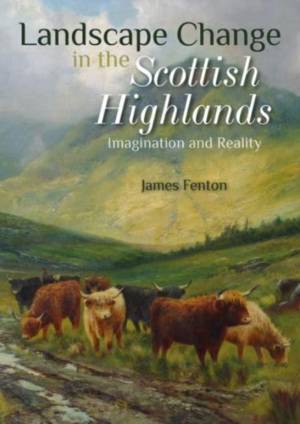
- Retrait gratuit dans votre magasin Club
- 7.000.000 titres dans notre catalogue
- Payer en toute sécurité
- Toujours un magasin près de chez vous
- Retrait gratuit dans votre magasin Club
- 7.000.000 titres dans notre catalogue
- Payer en toute sécurité
- Toujours un magasin près de chez vous
Landscape Change in the Scottish Highlands
Imagination and Reality
James FentonDescription
The Scottish Highlands have a strong appeal to the public imagination. Indeed, as a result of the writings of Sir Walter Scott, they are now symbolic of Scotland as a whole: a land of mountains, glens and lochs, of golden eagles and red deer; a land with a rich cultural history of clans and clanship, of kilts and castles, of crofts, crofting, Highland cows and sheep, of music and dance. But does this imagined landscape relate to the actuality? Is it in fact a wild landscape which has escaped the pressures of the modern world, or does such untrammelled wildness only reside in the mind?
The aim of this book is to answer this last question by taking an objective look at the history of the Highland landscape, how it has changed over the centuries and how it is still changing.It challenges the view that the Highlands are a landscape damaged by centuries of overgrazing and human exploitation. Instead it points out that the evidence suggests that the traditional unwooded Highland landscape of open hill and moor is one of the most natural remaining in northwest Europe, showing only minimal signs of human impact over the millennia; apart, that is, from the areas of human settlement.
It is not only reforesting and peatland restoration which is destroying the naturalness of the Highland landscape, but also the continuing encroachment of infrastructure, whether hill tracks, wind turbines, dams, phone masts, ski development, fences, and commercial forestry plantations. Why can we not just let the hills be? After all, this is how they were for thousands of years until landownership entered the Highlands following the Battle of Culloden.
Author hometown: Oban
Spécifications
Parties prenantes
- Auteur(s) :
- Editeur:
Contenu
- Nombre de pages :
- 192
- Langue:
- Anglais
Caractéristiques
- EAN:
- 9781849955515
- Date de parution :
- 05-03-24
- Format:
- Livre broché
- Format numérique:
- Trade paperback (VS)
- Dimensions :
- 172 mm x 240 mm
- Poids :
- 480 g







